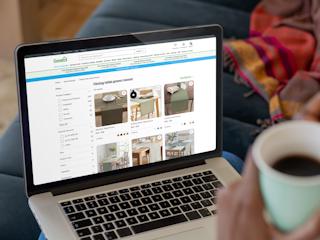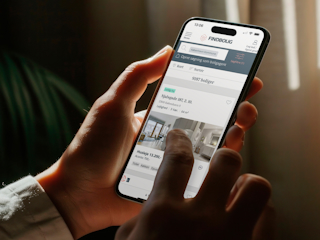Valtech Store - a smart online experimental store!
december 05, 2016
In our first blog post about the Valtech Store, we told you why we decided to convert a meeting room at our Stockholm offices into a store. Now it’s time to present the results of several months of hard work, a concept that touches on two fields we’re passionate about. First, how to create richer customer experiences using digital tools. Next, how we can set up data collection in the physical space.
A richer customer experience
Today’s consumers aren’t exactly loyal creatures, and why should they be? In their hands they carry a tool that can tell them where to buy the product at a lower price in an instant. Smartphones have become a weapon that has concentrated power in the hands of the consumer, but it can also be turned into a tool for you as the merchant. You can now use it to provide consumers with a better experience and better service. Along with other new and exciting technologies, retail apps on the smartphone can give you an edge and ultimately make the consumer more loyal.
We’ve now gone to a business where your best customer can be standing in your best store and with three touches of their thumb to a piece of glass, they can buy from your biggest competitor.
- Fred Argir, Chief Digital Officer, Barnes & Noble
Data collection in the physical space
The work we’ve been doing online has been highly data-driven for many years. We’ve set measurement points, conducted analyses and made adjustments to optimize services and solutions. We’ve obviously also gathered insights in the physical space, primarily by asking our visitors questions or observing them. But it has been more difficult to do truly data-driven work in the physical dimension. But all that has finally started to change now, thanks to new technologies. We can now collect large volumes of data using technologies like the Internet of Things.
Of course this doesn’t mean that we’re going to stop talking to people, asking them questions or silently observing their behaviour. Like marketing guru Martin Lindström says in his latest book, Small Data, The tiny clues that uncover huge trends: we can get closer to the truth both by breaking down the numbers and by looking at human behaviour. Doing so gives us richer insights and helps us create better services, products and experiences for end-users.
If companies want to understand consumers, big data offers a valuable, but incomplete, solution.
- Martin Lindström
That was a brief description of the concept. Now it’s time to go through the various prototypes at the Valtech Store.
This prototype is the result of the hard work done by our colleagues at Valtech Germany. We have iterated since then and made certain additions in order to be able to retrieve data from it.
An online shoe
- Endless aisle - Allows for a smaller retail footprint
- Digital & physical interaction
- Social recommendations
- Records number of picked items
Works, doesn’t work – A/B testing in the store
- Provides merchant with real-time data and insights
- Real-time analysis & optimization
- Records number of picked items
Virtual Reality as product experience
- Virtual product experience
- Allows for a smaller retail footprint
- Records client’s emotions using Microsoft Emotions API
- Records number of product experiences
Smart mirror & sales funnel
- Digital personal shopper
- Sales funnel from the physical space: garment chosen – garment tried on – garment purchased
- Customer completes the purchase with his own smartphone
- Integrated online and offline store
- Allows for a smaller retail footprint
Retail has to focus on what’s good for the environment
It is possible to make retail more environmentally friendly. Valtech Store isn’t some futuristic vision; it’s an example of solutions that are available today. Our shoe, the VR product experience and the smart mirror are all solutions that save space – and when you save space you save energy. By merging the physical store with the digital one, that’s when we get at one of online commerce’s biggest problems – returns. It’s a huge problem for all e-tailers, but especially those that sell clothing. The fact of the matter is that we now use our bedrooms as fitting rooms. We order a whole bunch of clothes in different sizes online, and then return everything we’re not happy with. It’s a drain on our planet’s resources for all these clothes to be sent back and forth between where we live and the store’s warehouse. One way to make stores more sustainable is to have the online presence merge with offline.
The Valtech Store is taking a few small steps in the direction of sustainability, but there is so much more that can be done. Imagine if stores could become completely self-sufficient in terms of energy, if nothing were thrown away, and if people were to buy only the things they really need. That’s not just some stray pleasant thought, but the direction we need to take to preserve our planet.
More on the way
Now we’ve let you know why we built a smart online experimental store at our office in Stockholm, and have also tried to let you in on what’s in it. Soon we’ll be publishing another post about the Valtech Store to let you know more about what you and your organisation in particular can do in this space. Don’t miss it!








